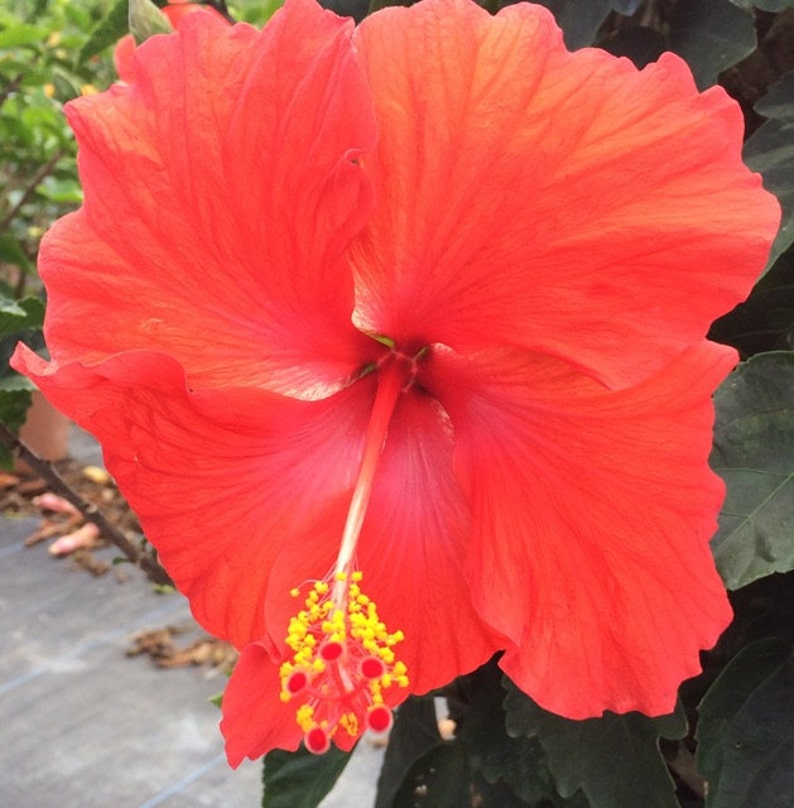
Hibiscus tea has gained popularity as a delightfully refreshing beverage with a tart, berry-like flavor, but it might surprise you to find out that it doesn’t come from a berry or fruit at all. Nor does it even come from the showy flower of the hibiscus plant.
The dark red tea actually comes from the calyx of the Hibiscus sabdariffa plant (the little cup of modified leaves that hold the flower). I understand if the thought of drinking calyx tea doesn’t ignite passion in your heart, but maybe it should because hibiscus tea may be just what your heart needs.
Hibiscus tea is very rich in a class of compounds known as anthocyanins (responsible for its dark red color) that are commonly found in dark blue and red fruits/berries. On top of being very antioxidant, the anthocyanins in hibiscus have also demonstrated ACE inhibiting activity – just like many drugs people take for hypertension. In fact, in a 2010 study, patients who took an extract which contained 250 mg of hibiscus anthocyanins per day saw a greater decrease in blood pressure than patients who took 10 mg of lisinopril (an ACE inhibitor) and with fewer side-effects.(1)
This study also showed that the hibiscus extract had a mild diuretic effect, but that it maintained potassium levels which is very important for individuals being treated with hypertension. Patients being treated for hypertension often take a diuretic and ACE inhibitor combined, but here we have a plant medicine that offers both in a safe package.
Hibiscus is also rich in various polyphenols, in addition to the anthocyanins, and all of these compounds combined may play a role in protecting our blood vessels from damage caused by excessive blood sugar or blood lipids – often features in diabetes and metabolic syndrome that can lead to cardiovascular disease.(2) Regular consumption of hibiscus tea could help to prevent complications associated with these conditions such as poor peripheral circulation, retinopathy, atherosclerosis, and hypertension.
Taking an extract standardized to anythocyanins can be an easy way to take hibiscus, but why pass up a chance to enjoy the delicious tea? Another study showed that drinking an 8 oz cup of hibiscus tea (one tea bag steeped for six minutes) three times a day, was also effective at lowering blood pressure in patients with pre- or mild hypertension.(3)
Of course, you should always discuss using herbs and dietary supplements with your doctor to make sure they are right for you.
-Article written by Kaleb Lund, PhD, Core Faculty Member in the School of Naturopathic Medicine and Department of Botanical Medicine and Assistant Research Scientist for the Bastyr University Research Institute.
(1) Herrera-Arellano, A., Miranda-Sanchez, J., et al. (2007) “Clinical effects produced by a standardized herbal medicinal product of Hibiscus sabdariffa on patients with hypertension. A randomized, double-blind, Linisopril-controlled clinical trial.” Planta Medica. 73:6-12
(2) McKay, D.L., Chen, C-Y., et al. (2010) “Hibiscus sabdariffa L. tea (tisane) lowers blood pressure in prehypertensive and mildly hypertensive adults.” The Journal of Nutrition. 140(2):298-303
(3) Joven, J., March, I., et al. (2014) “Hibiscus sabdariffa extract lowers blood pressure and improves endothelial dysfunction.” Molecular Nutrition & Food Research. 58(6):1374-1378










